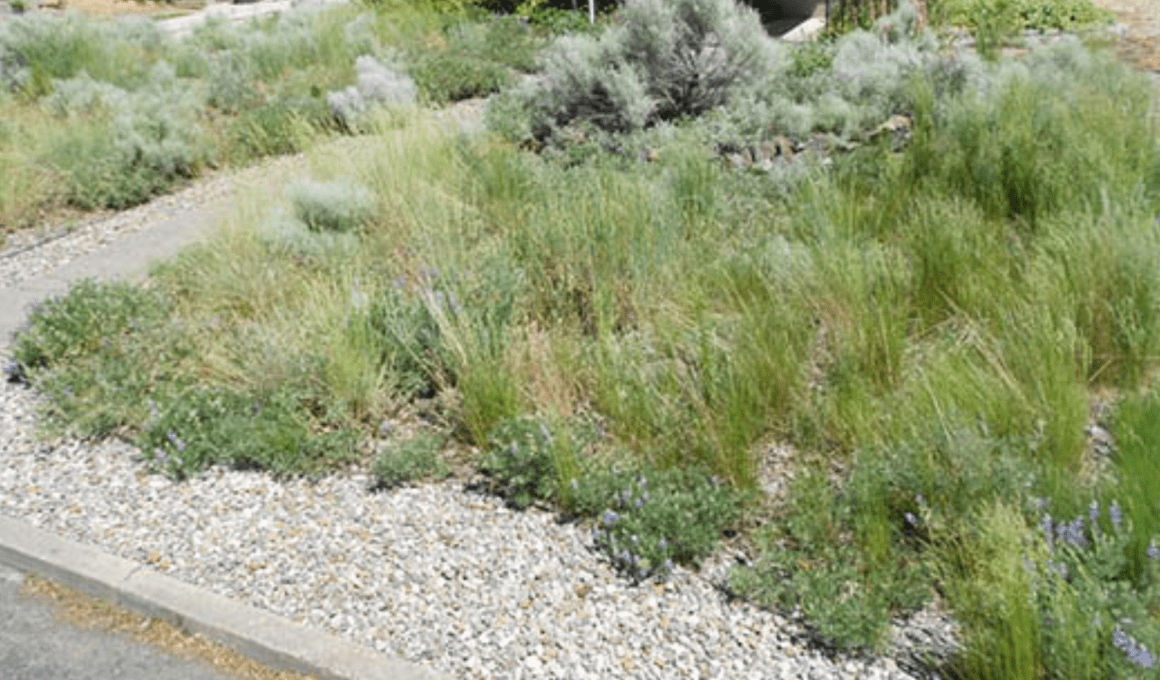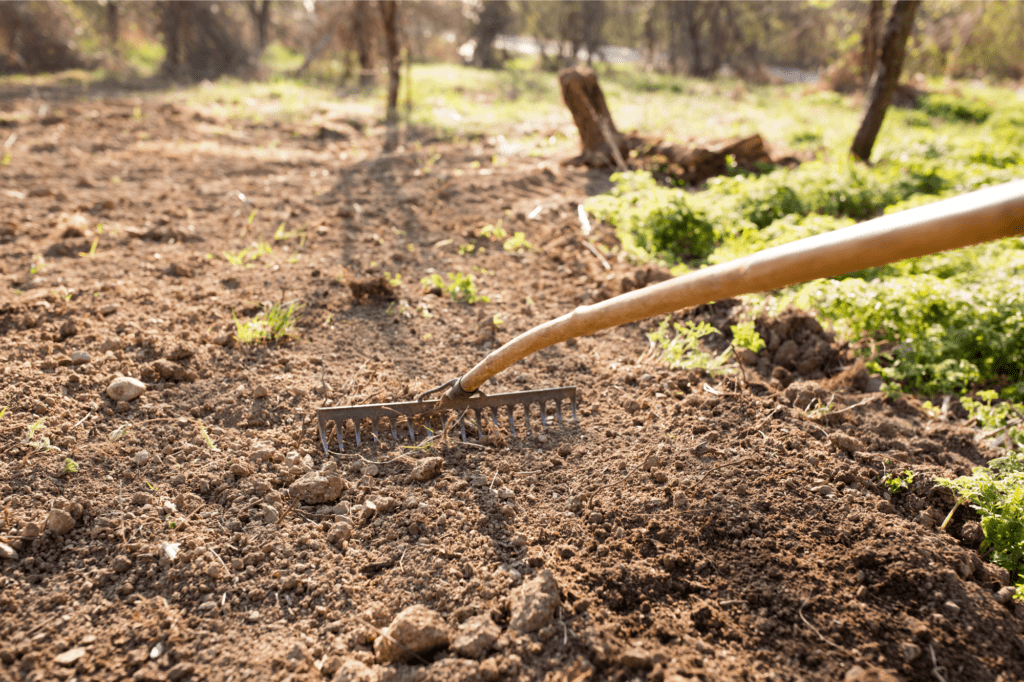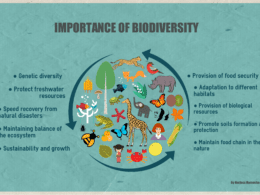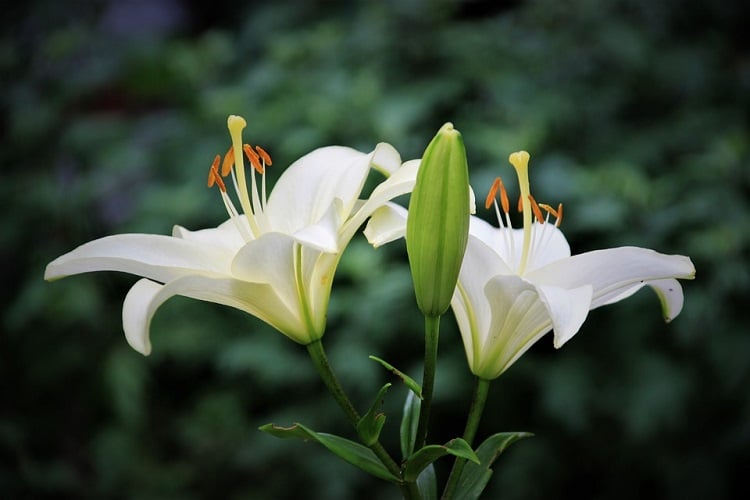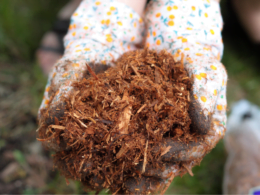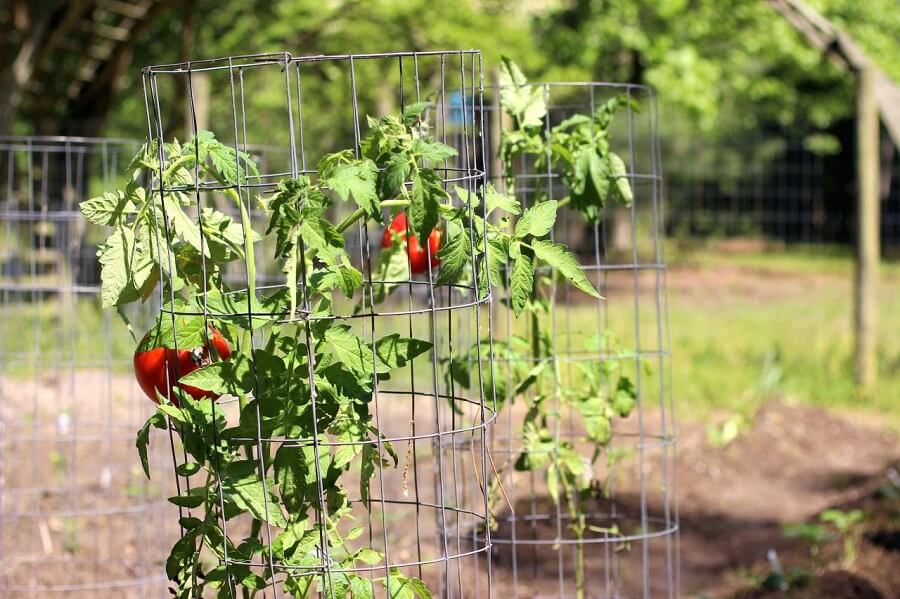Are you tired of spending countless hours and money maintaining your lawn? Do you desire a safer and more sustainable outdoor space? Look no further!
In this article, we will show you how to convert your lawn into a natural area that is not only beautiful, but also beneficial for the environment. By following these simple steps, you can create a thriving ecosystem that supports local wildlife and reduces the need for harmful chemicals.
From assessing your lawn and determining your goals to managing weeds and pests naturally, we have got you covered. You will also learn how to reduce water usage and maintain your natural area with ease.
So, grab your gardening gloves and get ready to transform your lawn into a safe and sustainable haven for both you and the environment.
Quick Summary
- Convert lawn into a natural area to create a safer and more sustainable outdoor space.
- Choose non-toxic plants and materials that support local wildlife and reduce the need for harmful chemicals.
- Prepare soil using sustainable methods and improve its quality with organic matter.
- Incorporate native plants, clear pathways, seating areas, and water features to enhance functionality and beauty in the natural area.
Assess Your Lawn and Determine Your Goals
Before diving into the process, take a moment to assess your lawn and envision your goals for transforming it into a beautiful and thriving natural area.
It’s important to start by assessing the health of your lawn. Look for any signs of disease, pests, or nutrient deficiencies. This will help you determine the steps needed to improve its overall condition.
Setting realistic goals is also crucial. Think about what you want to achieve with your natural area. Are you looking to attract more wildlife, reduce maintenance, or simply create a more eco-friendly space? Consider your available time, budget, and resources when setting these goals.
Keep in mind that transitioning your lawn to a natural area takes time and effort, so be patient and realistic with your expectations.
Remember, safety should always be a top priority. If you have children or pets, make sure to choose plants and materials that are non-toxic and safe for them.
By assessing your lawn’s health and setting realistic goals, you’ll be on your way to converting your lawn into a beautiful and thriving natural area.
Remove Grass and Prepare the Soil
To remove grass and prepare the soil for your natural area, you’ll want to use sustainable methods that are kind to the environment.
Start by physically removing the grass using a shovel or sod cutter, making sure to remove all roots and vegetation.
Next, focus on improving the soil quality by adding organic matter such as compost or aged manure to enrich the soil and provide nutrients for your plants.
Lastly, ensure proper drainage by amending the soil with materials like sand or gravel, as well as creating gentle slopes or swales to redirect water away from your new natural area.
Use Sustainable Methods to Remove Grass
Get ready to ditch that boring grass and start using sustainable methods to remove it from your lawn!
When it comes to sustainable lawn removal, there are plenty of eco-friendly grass removal methods to choose from. One option is sheet mulching, which involves layering cardboard or newspaper over the grass and then adding a thick layer of compost or mulch on top. This method smothers the grass and allows it to decompose naturally, enriching the soil in the process.
Another option is solarization, where you cover the grass with clear plastic to trap heat from the sun and kill it. This method is effective, but it may take a few weeks to fully eliminate the grass.
Whichever method you choose, be sure to follow safety guidelines and wear protective gear when handling any chemicals or equipment. With these sustainable methods, you can say goodbye to your old grass and hello to a more natural and environmentally friendly lawn!
Improve Soil Quality and Drainage
Transform your soil into a thriving ecosystem by enhancing its quality and promoting efficient drainage.
Here are three simple steps to improve soil fertility and promote biodiversity:
- Add organic matter: Incorporate compost or well-rotted manure into your soil. This will provide essential nutrients and improve its structure, allowing for better water retention.
- Avoid chemical fertilizers: Instead, use natural alternatives like bone meal or fish emulsion to nourish your soil. These options are safer for the environment and minimize the risk of harmful chemical runoff.
- Plant diverse species: Introduce a variety of plants to your natural area. This encourages beneficial insects and promotes a healthy balance in your ecosystem.
By following these steps, you’ll not only improve the fertility of your soil but also create a safe and thriving habitat for plants and wildlife. Enjoy the beauty and benefits of a biodiverse natural area right in your own backyard.
Choose Native Plants and Design Your Natural Area
When choosing native plants for your natural area, it’s important to research which species are suitable for your specific region. Consider factors such as climate, soil type, and sun exposure to ensure the plants will thrive in their new environment.
Once you have identified the appropriate plants, you can then plan the layout and design of your natural area. Take into account factors such as the size and shape of the space, as well as any existing features you want to incorporate or work around.
Research Native Plants Suitable for Your Region
Explore the local flora in your region and discover which native plants are perfect for your natural area transformation. Start by researching techniques and regional resources to ensure you choose the right plants for your area.
Look for information on websites, local nurseries, and botanical gardens that specialize in native plants. These resources can provide valuable guidance on which plants are suitable for your specific region, taking into account factors such as soil type, sunlight exposure, and climate.
It’s essential to choose native plants that are well-adapted to your region, as they’ll require less maintenance and be more resistant to pests and diseases. By doing your research and selecting the right native plants, you’ll create a natural area that thrives and contributes to the local ecosystem.
Plan the Layout and Design of Your Natural Area
Designing your outdoor space with a carefully planned layout will ensure a beautiful and functional natural area. When considering the design, there are a few key factors to keep in mind.
Design considerations:
- Pathways: Create clear paths throughout the natural area to provide safe and easy access for you and your family.
- Seating areas: Incorporate seating areas where you can relax and enjoy the beauty of your natural space.
- Water features: Consider adding a small pond or fountain to attract wildlife and create a tranquil atmosphere.
Plant selection criteria:
- Maintenance: Choose plants that require minimal upkeep, reducing the need for chemicals and excessive watering.
- Native species: Opt for plants native to your region as they’re better adapted to the climate and require less maintenance.
- Wildlife habitat: Select plants that provide food and shelter for local wildlife, promoting biodiversity in your natural area.
By carefully considering these design and plant selection criteria, you can create a safe and inviting natural area that adds beauty and functionality to your outdoor space.
Plant and Establish Native Plants
To properly plant and water native plants, start by digging a hole that’s slightly wider and deeper than the plant’s root ball. Gently place the plant in the hole and backfill it with soil, making sure to firm it around the roots.
After planting, water the plant thoroughly and then continue to water it regularly, especially during dry periods. Additionally, mulching around your plants can help conserve moisture, suppress weeds, and improve soil health.
Maintain your plants by regularly checking for pests or diseases and providing any necessary care, such as pruning or fertilizing.
Properly Plant and Water Native Plants
With proper planting and watering, your lawn can transform into a vibrant natural area filled with native plants. When planting native plants, it’s important to follow proper watering techniques to ensure their successful establishment.
Start by digging a hole twice as wide as the plant’s root ball and slightly shallower. Gently remove the plant from its container and loosen the roots. Place the plant in the hole, making sure it’s level with the ground. Backfill the hole with soil, firmly pressing it down.
After planting, water the plant thoroughly, making sure the soil is evenly moist. Continue to water regularly, especially during dry periods, to help the plant develop a strong root system.
Native plants not only thrive in your area’s climate but also provide numerous benefits, such as attracting pollinators and conserving water resources.
Mulch and Maintain Your Plants
Mulching and maintaining your plants is essential for their health and longevity. When it comes to mulching, there are several benefits to consider. First, mulch helps to retain moisture in the soil, reducing the need for frequent watering. This isn’t just convenient but also saves water, which’s important for the environment.
Additionally, mulch acts as a natural weed suppressant, preventing the growth of unwanted plants that can compete with your native plants for nutrients and water.
In terms of plant maintenance, regular pruning’s key. Trimming back any dead or diseased branches promotes healthy growth and prevents the spread of diseases. It’s also important to monitor for pests and take appropriate action if necessary, using organic methods to ensure the safety of your plants and the surrounding environment.
By mulching and maintaining your plants properly, you can create a beautiful and sustainable natural area that’ll thrive for years to come.
Create Habitat Features for Wildlife
Enhance your lawn’s natural beauty by incorporating habitat features that attract and support wildlife. Creating a welcoming environment for wildlife not only adds to the charm of your natural area but also contributes to wildlife conservation and ecological restoration. By providing food, water, shelter, and nesting sites, you can create a haven for various species right in your own backyard.
To grab your attention, let’s take a look at this table that highlights some habitat features you can incorporate:
| Habitat Feature | Description |
|---|---|
| Bird Feeders | Attract a variety of bird species with food and water |
| Butterfly Gardens | Provide nectar-rich plants and host plants for butterfly eggs |
| Pond or Water Feature | Offer a water source for birds, insects, and amphibians |
| Nesting Boxes | Provide safe nesting sites for birds and small mammals |
When incorporating these habitat features, it is essential to prioritize safety. Ensure that bird feeders are placed away from windows to prevent bird collisions. Use native plants in your butterfly garden to support local wildlife and avoid pesticides that could harm beneficial insects. If you have a pond or water feature, consider adding shallow areas or rocks to help wildlife easily access the water.
By incorporating these habitat features, you can create a thriving ecosystem in your natural area while supporting wildlife conservation and ecological restoration efforts.
Manage Weeds and Pests Naturally
To effectively manage weeds and pests in your backyard, try using natural methods that promote a healthy and balanced ecosystem. Natural pest control is a safe and effective way to keep unwanted critters at bay without harming the environment or endangering your family and pets.
One method of natural pest control is companion planting. This involves planting certain combinations of plants that work together to repel pests. For example, marigolds can deter aphids and nematodes when planted near tomatoes, while lavender can repel moths when planted near cabbage. By strategically placing these companion plants throughout your garden, you can create a natural barrier against pests.
Another natural method to manage weeds and pests is to maintain a healthy and diverse ecosystem. This means providing a habitat for beneficial insects, birds, and other wildlife that can help control pests naturally. You can do this by creating areas of wildflowers, planting native shrubs and trees, and providing food and water sources for wildlife. By encouraging a balanced ecosystem, you can reduce the need for chemical pesticides and herbicides.
Managing weeds and pests naturally is not only safe but also beneficial for the overall health of your backyard. By utilizing natural pest control methods and promoting a diverse ecosystem, you can maintain a beautiful and thriving natural area.
Reduce Water Usage and Maintain Your Natural Area
To reduce water usage and maintain your natural area, consider installing a rain barrel or drip irrigation system. These systems can help you collect and use rainwater efficiently, reducing the need for traditional watering methods.
Additionally, make sure to regularly monitor and maintain your natural area. Check for leaks, adjust irrigation schedules, and remove any weeds or plants that may be competing for water. By implementing these practices, you can conserve water and ensure the health and longevity of your natural area.
Install a Rain Barrel or Drip Irrigation System
By installing a rain barrel or drip irrigation system, you can effectively conserve water and nurture your plants in a more sustainable manner. Here are some benefits of using a rain barrel or drip irrigation system:
- Water Conservation: Rain barrels collect and store rainwater, reducing the need for tap water and conserving this precious resource.
- Cost Savings: Using a rain barrel or drip irrigation system can lower your water bill, saving you money in the long run.
- Plant Health: Drip irrigation systems deliver water directly to the plant’s root zone, minimizing water waste and ensuring plants receive the right amount of hydration.
- Weed Control: By watering plants directly at the root, drip irrigation systems reduce water contact with weeds, helping to prevent their growth.
- Environmental Protection: By reducing reliance on tap water, rain barrels and drip irrigation systems help protect local water sources from depletion and contamination.
By implementing these water-saving techniques, you can create a natural area that not only thrives but also contributes to a healthier environment.
Regularly Monitor and Maintain Your Natural Area
Make sure you keep an eye on and take care of your beautiful outdoor space. Monitoring your natural area is essential to ensure its long-term health and safety. Here are some monitoring techniques and tips for long-term maintenance:
| Monitoring Techniques | Long-Term Maintenance |
|---|---|
| Regularly inspect the area for any signs of pests or disease. | Remove any invasive species that may threaten the natural balance. |
| Check the soil moisture regularly to ensure proper hydration. | Trim and prune plants as needed to maintain their health and shape. |
| Monitor the growth of plants and remove any competing weeds. | Mulch the area to retain moisture and suppress weed growth. |
By regularly monitoring and maintaining your natural area, you can detect any issues early on and take necessary actions to prevent them from becoming bigger problems. This will help ensure the longevity and beauty of your natural space while promoting safety for both you and the environment.
Enjoy the Benefits of a Natural Area
Experience the numerous advantages of transforming your lawn into a natural area and revel in the many benefits it brings. Converting your lawn into a natural area not only enhances the beauty of your surroundings but also provides a safe haven for various species to thrive. Here are some benefits you can enjoy:
- Benefits of biodiversity:
- Increased plant diversity promotes a healthier ecosystem.
- Diverse habitats attract a variety of wildlife species, contributing to a balanced ecosystem.
- Biodiversity helps control pests naturally, reducing the need for harmful chemicals.
- Importance of pollinators:
- Natural areas provide ample food and shelter for pollinators like bees and butterflies.
- These pollinators play a crucial role in the reproduction of plants and the production of fruits and seeds.
- By creating a natural area, you support pollinator populations and help maintain the natural cycle of plant reproduction.
- Safety benefits:
- Natural areas reduce the need for pesticides and fertilizers, creating a safer environment for children and pets.
- The absence of toxic chemicals eliminates the risk of exposure and potential health hazards.
- Additionally, natural areas can help prevent soil erosion and filter rainwater, reducing the risk of flooding.
By converting your lawn into a natural area, you not only contribute to the conservation of biodiversity and the preservation of pollinators but also create a safer and healthier environment for everyone to enjoy. So go ahead, embrace the advantages and revel in the beauty of your own natural space.
Frequently Asked Questions
What are some common challenges that homeowners face when converting their lawn to a natural area?
Common challenges when converting your lawn to a natural area include dealing with invasive plants, adjusting to the new maintenance routine, and attracting beneficial wildlife. Here are some tips and tricks to overcome these challenges and ensure a safe transition.
Are there any specific tools or equipment that are necessary for removing grass and preparing the soil?
To remove grass and prepare the soil, you’ll need a few essential tools: a shovel or sod cutter for grass removal, a rake for leveling, and a garden fork or tiller for soil preparation. Ensure proper safety precautions while using these tools.
How do I choose the right native plants for my natural area?
To choose the right native plants for your natural area, consider factors like sunlight, soil type, and water availability. Native plants provide benefits like attracting wildlife, conserving water, and promoting biodiversity.
What are some important factors to consider when establishing native plants in my natural area?
When establishing native plants in your natural area, it’s important to consider factors like soil type, sunlight exposure, and water requirements. By following best practices, you can enjoy the benefits of these plants while ensuring their proper maintenance and care.
How can I attract and support wildlife in my natural area?
To attract and support wildlife in your natural habitat, create diverse plantings that provide food and shelter. Use native plants, minimize pesticide use, and maintain water sources. These practices promote wildlife conservation and a thriving ecosystem.
Conclusion
So there you have it, you’ve successfully converted your lawn into a beautiful natural area! By following these steps and taking the time to assess, remove, choose, plant, create, manage, reduce, and maintain, you’ve not only created a stunning landscape but also provided a habitat for wildlife.
The benefits of a natural area are endless, from reduced water usage to the enjoyment of watching birds and butterflies. So sit back, relax, and bask in the beauty of your new natural oasis. Well done!





